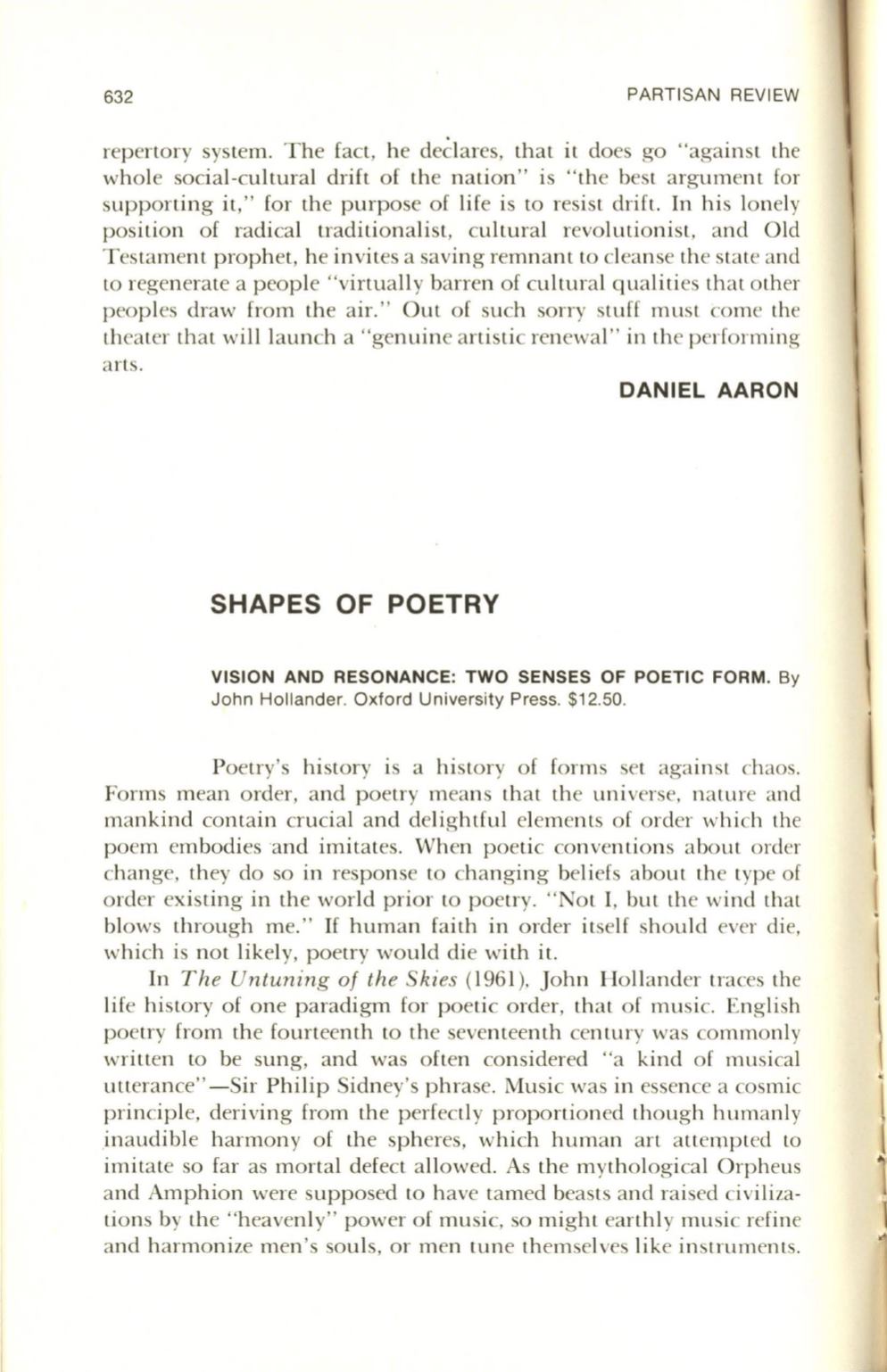
632
PARTISAN REV IEW
repertory system. The fact, he declares, that it does go "aga inst the
whol e social-cultural drift of the nation" is "the best argument for
supporting it," for the purpose of life is to resist drift. In his lonely
pos ition of rad ical traditiona list, cultural revolutionist, and Old
Testament prophet, he invites a saving remnant
to
cl eanse the state and
to
regenerate a people "virtually barren of cultural qualiti es that other
peoples draw from the air." Out of such sorry stuff must come the
thea ter that will launch a "genuine artistic renewa l" in the performing
arts.
DANIEL AARON
SHAPES OF POETRY
VISION AND RESONANCE: TWO SENSES OF POETIC FORM. By
John Hollander. Oxford University Press. $12.50.
Poetry's history is a history of forms set against chaos.
Forms mean order, and poetry means that the universe, nature and
mankind contain crucial and delightfu l elements of order whi ch the
poem embodies and imitates. When poetic conventions aboLit order
change, they do so in response to changing beli efs aboLit the type of
order existing in the world prior to poetry. "Not I, but the wind that
blows through me."
If
human fa ith in order itself shou ld ever die,
which is not likely, poetry wou ld di e with it.
In
The Untuning of the Skies
(1961 ). John Ho ll ander traces the
\ife history of one paradigm for poetic order, that of music. English
poetry from the fourteenth to the seventeenth century was common ly
written to be sung, and was often considered "a kind of musi cal
utterance" - Sir Phi lip Sidney's phrase. Music was in essence a cosmic
princip le, deriving from the perfectly proportioned though human ly
inaudible harmony of the spheres, which h uman art attempted
to
imitate so far as mortal defect a ll owed. As the mythological Orpheus
and Amphion were supposed to have tamed beasts and raised civi liza–
tions by the "heavenly" power of music, so might earthl y musi c refine
and harmonize men 's souls, or men tune themselves like instruments.


